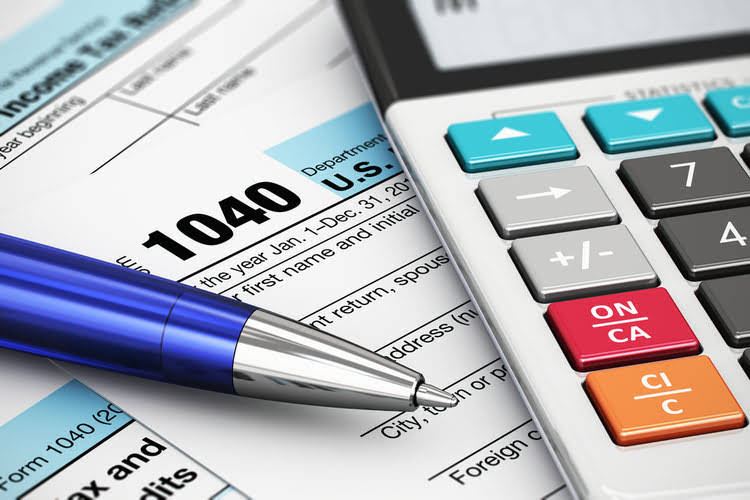In conclusion, depreciation is used in different sectors to allocate the cost of assets over their useful life. Manufacturing companies use the straight-line method of depreciation for their machinery and plant and machinery. Real estate companies use the straight-line method of depreciation for their buildings and land, taking into account the carrying value of the asset. Companies that own vehicles use the straight-line method of depreciation, taking into account the salvage value of the asset. Depreciation expense is calculated by dividing the cost of the asset by its useful life. Depreciation is a method of accounting that records the decrease in the value of an asset over time.
- To know if this depreciation cost is a liability or an asset, let us first understand how these costs are and how are they recorded.
- Common examples of entities that typically have accumulated depreciation include buildings, machinery, equipment, vehicles, and other long-term items which extend a one-year life period.
- However, when your company sells or retires an asset, you’ll debit the accumulated depreciation account to remove the accumulated depreciation for that asset.
- We’ll explore what accumulated depreciation is, how to calculate accumulated depreciation, and some examples of common fixed assets where accumulated depreciation is used.
- The calculation of Accumulated Depreciation relies on several assumptions and estimates, such as an asset’s useful life and residual value.
The straight-line method is the simplest and most common, dividing the depreciable cost evenly over the asset’s useful life. For example, if a company purchases a piece of machinery for $20,000 with a useful life of 10 years, the annual depreciation expense would be $2,000. Since assets typically have debit balances on the balance sheet, accumulated depreciation is credited against the depreciating asset to reflect its falling value over time. Hence the value of accumulated depreciation does not represent something that produced economic value, whether in the past or the future. First, it allows companies to accurately track the value of their assets over time. Second, it helps companies to determine the true cost of using an asset, which can be used to make informed decisions about whether to repair or replace an asset.
It’s essential for businesses to consult with a tax professional to ensure correct application of MACRS and proper reporting of depreciation expenses on tax returns. The declining balance method accelerates depreciation, offering higher deductions earlier in the asset’s life. Accumulated depreciation is a crucial element in financial statements, and its accurate calculation and recording are essential for making informed business decisions.
Generation of adequate funds in the hands of the business for assets replacement at the end of its useful life. Depreciation is a good indication of the amount an enterprise should set aside to replace a fixed asset after its economic useful life is over. However, the replacement cost of a fixed asset may be impacted by inflation or other technological changes. Here, the cost of assets is reduced with the estimated residual value of an asset at the end of its useful life to arrive the accumulated depreciation. Depreciation expense, on the other hand, is reported in the income statement and is closed to retained earnings at the end of the accounting cycle. They are recorded in the balance sheet, along with liabilities and owner’s equity.
Company
- According to this method depreciation is a fixed percentage on its net book value each year.
- Buildings, vehicles, equipment, and other fixed assets are key to running a business, but their use also comes with wear and tear.
- The cost of non current assets comprises of its purchase price, including import duties and taxes and any costs directly attributable in bringing the asset to its present location and condition.
- It is mostly used for machinery since it produces more during its first years of trading.
The depreciation expense is calculated by dividing the asset’s cost by its useful life. For example, if a company purchases a machine for $10,000 with a useful life of 5 years, the annual depreciation expense would be $2,000. Depreciation expense and accumulated depreciation are two important concepts in accounting that help companies accurately report the value of their assets over time. Here, we will outline the distinctions between depreciation expense and accumulated depreciation in various aspects that pertain to them. While depreciation is recorded as an expense on the income statement, it doesn’t involve an outflow of cash. Accumulated Depreciation is crucial for presenting a company’s financial health accurately.
Is Accumulated Depreciation an Asset? How To Calculate It
Tax is a significant aspect of depreciation, and understanding it can help businesses save money. Tax depreciation is a depreciation expense listed by a business on their tax return for a given tax period. The MACRS method accelerates the depreciation rate compared to the straight-line method, resulting in a higher depreciation expense in the earlier years of an asset’s life.
According to this method, depreciation is the difference between the value at start and the value at end. This method is appropriate for businesses that have many small items of non-current assets (example loose tools). The assets should be adjusted for depreciation charged in order to depict the actual financial position. If depreciation is not accounted, the assets would be disclosed in financial statements at a value higher than their true value.
Accumulated Depreciation vs. Depreciation Expense
However, when your company sells or retires an asset, you’ll debit the accumulated depreciation account to remove the accumulated depreciation for that asset. For example, say Poochie’s Mobile Pet Grooming purchases a new mobile grooming van. If the company depreciates the van over five years, Pocchie’s will record $12,000 of accumulated depreciation is accumulated depreciation a non current asset per year, or $1,000 per month. In this case, you can use the straight-line method to calculate the annual accumulated depreciation of the asset.
Accumulated depreciation, being the total depreciation that is reduced from the asset’s value, is neither an asset nor a liability. It is treated as a long-term contra asset classified under the heading property, plant, and equipment as a credit balance. Accumulated depreciation is only relevant when it comes to long-term assets, because short-term assets aren’t in use long enough to experience wear and tear over time. Accumulated depreciation should be shown just below the company’s fixed assets. It’s a way to measure the total change in value of a fixed asset so that you can allocate the asset’s value over its usable life. When you’re recording accumulated depreciation, it’s recorded as a contra asset on the asset side of your balance sheet.
Double-Declining Balance Method
Depreciation expense is recorded each period to reflect the decline in value. Accumulated depreciation is the amount of total depreciation of all the company’s fixed assets as of the balance sheet date. Depreciation is a term used in bookkeeping to describe the decrease in the value of an asset over time. This decrease in value is due to various factors such as wear and tear, obsolescence, and other external factors.
Each method has its own advantages and disadvantages, and it is important for bookkeepers to choose the method that best suits their needs. There are several types of depreciation, each with its own method of calculation. The most common types of depreciation are straight-line, declining balance, and units of production.
Accumulated depreciation offsets the asset to show its current book value on the balance sheet. Book value and carrying value are terms used to describe the value of an asset on the balance sheet. The book value of an asset is the cost of the asset less accumulated depreciation. The carrying value of an asset is the book value of the asset less any impairment losses. Overall, businesses must choose the depreciation method that best suits their needs and the type of asset they own.
Accumulated depreciation is the total amount of wear and tear that an asset has undergone. This records the repair or replacement cost a company is expected to bear for that particular asset. To know if this depreciation cost is a liability or an asset, let us first understand how these costs are and how are they recorded. With Asset Panda’s highly customizable solution, you can keep track of numerous types of assets and all their relevant details, including location, maintenance history, and expected replacement date. Our automated capabilities ensure that depreciation is always calculated on schedule and reports are automatically sent to accounting so your team never misses a beat.
Accumulated depreciation is a contra-asset account, meaning it reduces the value of assets on the balance sheet rather than being a liability. While Accumulated Depreciation impacts financial statements, it is a non-cash expense. Investors and analysts should be cautious when interpreting this data, as it does not represent actual cash outflows. The calculation of Accumulated Depreciation relies on several assumptions and estimates, such as an asset’s useful life and residual value. These assumptions may not always align with real-world conditions, leading to inaccuracies in the calculated data.
At the end of the year, Company A uses the straight-line method to calculate the depreciation for the van, arriving at an annual expense of $2,000 ($20,000 purchase price / 10 years of useful life). It lowers taxable income and, subsequently, tax liabilities, providing cost savings for businesses. A healthy balance between accumulated depreciation and new investments ensures operational efficiency and long-term financial stability. Companies must balance accumulated depreciation with asset replacement planning to avoid sudden financial strain. Companies use accumulated depreciation to determine when assets need replacement or upgrades, aiding in budgeting and capital expenditure decisions. This is a straightforward guide to the chart of accounts—what it is, how to use it, and why it’s so important for your company’s bookkeeping.
What Is the Basic Formula for Calculating Accumulated Depreciation?
The IRS requires that an asset be owned by the business, used in a business or income-producing activity, have a determinable useful life, and be expected to last more than one year. This means that businesses can only depreciate assets that meet these criteria. The net book value of an asset is calculated as the cost of the asset minus the accumulated depreciation. Accumulated depreciation is not an expense or an asset, but rather a contra-asset account that reflects the reduction in an asset’s value over time due to depreciation. The MACRS depreciation method involves specific rules and tables provided by tax authorities.
Accumulated depreciation gives an account of depreciation cost allocated for assets when it is put to use. However, many experts argue that it is a liability as it does not represent something that produces economic value. It neither helps nor hurts an organization’s bottom line but it’s still extremely important to keep track of fixed asset depreciation.




